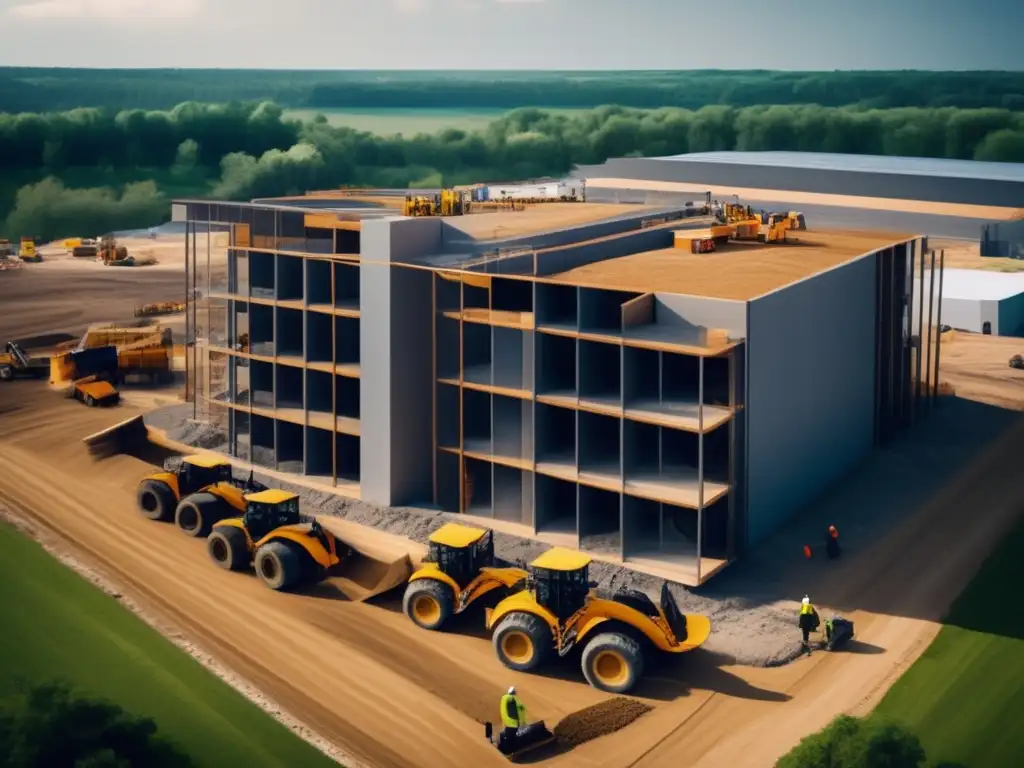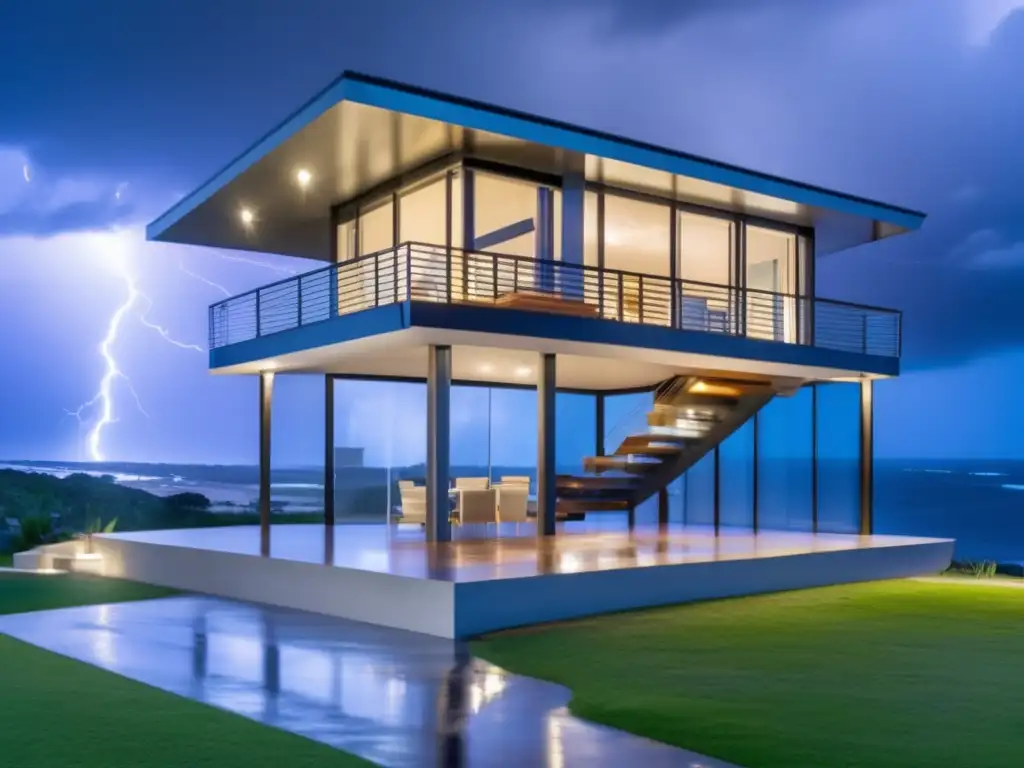Building A Hurricane-Resistant Home: Principles And Materials

Building a Hurricane-Resistant Home: Principles and Materials
Introduction
Living in a hurricane-prone area can be unsettling, especially when you consider the devastation and destruction it can cause. It's important to take precautions to ensure your safety, especially during a storm. One way to do this is by building a hurricane-resistant home. This article will provide you with essential knowledge on the principles and materials required to build a home that can withstand the impact of a hurricane.
Understanding Hurricane-Resistant Homes

The Importance of Resilience
A hurricane-resistant home is designed to be resilient against the powerful wind gusts and heavy rain that accompany tropical storms. The primary goal is to protect occupants from harm, minimize property damage, and ensure the structural integrity of the building. This resilience involves a combination of materials and design practices that can resist the pressure and force of the hurricane.
The Role of Building Codes
Building codes are an important factor in hurricane-resistant construction. They are designed to ensure that all new buildings and renovations are built according to specific standards. These codes vary by location, but in general, they require builders to use specific materials, adhere to certain design principles, and meet specified performance criteria that can withstand hurricane forces. When choosing a builder, make sure that they are licensed and familiar with the local building codes.
The Importance of Design
The design of your home is also an important factor in creating a hurricane-resistant structure. The shape and orientation of the house can significantly affect its ability to withstand hurricane winds. For example, a square plan is better than a rectangle, as it can minimize the effects of wind pressure. Additionally, placing the longer axis of the house perpendicular to the direction of the wind can help to reduce the load on the structure.
Materials for Hurricane-Resistant Homes

Roofing Materials
The roof is one of the most vulnerable parts of a home during a hurricane. Thus, it’s essential to use roofing materials that can resist strong winds and heavy rain. Metal roofing, asphalt shingles, and clay tiles are some of the popular materials used for roofing in hurricane-prone areas. Of these, metal roofing is the most popular due to its strength, durability, and ability to withstand flying debris.
Windows and Doors
Windows and doors are also critical parts of hurricane-resistant homes. They can provide natural light, ventilation, and passive solar heating. However, they need to be designed to resist wind pressure and impact from flying debris. Impact-resistant windows and doors are designed to withstand wind speeds of up to 200 miles per hour. These windows are usually made of laminated glass, which consists of two layers of glass with a plastic interlayer in between that holds them together if it cracks or breaks.
Framing
The framing of your home is another important factor in creating a hurricane-resistant structure. Your builder should use strong framing materials, such as engineered wood, rather than traditional lumber. Engineered wood is more resistant to rot and insect damage and can withstand higher wind loads. Additionally, the framing should be connected using bolts or screws instead of nails, as they offer better resistance to lateral loads caused by high winds.
Construction Techniques for Hurricane-Resistant Homes

Continuous Load Path
A continuous load path is an essential component of a hurricane-resistant home. It ensures that the load created by wind pressure is distributed evenly throughout the structure. This technique involves using connectors, anchors, and other materials to create a continuous flow of load resistance from the roof to the foundation.
Reinforced Concrete
Using reinforced concrete can significantly contribute to the strength and resilience of a hurricane-resistant home. Concrete is known for its ability to resist wind gusts and debris impact. Reinforced concrete adds an additional layer of strength to the structure, making it more resistant to hurricane forces.
Elevated Foundation
An elevated foundation can help protect your home from flooding during a hurricane. This technique involves building the structure on stilts or piers above the ground level. This helps to reduce the risk of water damage by preventing floodwater from entering your home. Additionally, it allows for better airflow under the house, which can help to reduce moisture buildup that can lead to mold and rot.
Frequently Asked Questions

-
Can I retrofit my existing home to make it hurricane-resistant?
Yes, you can retrofit your existing home to make it more resilient against hurricanes. You can add hurricane straps, anchors, and other connectors to reinforce the roof-to-wall connections. Additionally, you can install new roofing materials, windows, and doors that can withstand strong winds and flying debris.
-
What is the cost of building a hurricane-resistant home?
The cost of a hurricane-resistant home depends on various factors, such as location, size, materials used, and local building codes. Generally, it can cost anywhere from 10% to 20% more than a traditional home of the same size.
-
Do I need to hire a specialized builder to construct a hurricane-resistant home?
No, you don't necessarily need to hire a specialized builder to create a hurricane-resistant home. However, it's essential to choose a licensed and experienced builder who is familiar with local building codes and practices.
-
What are some additional benefits of constructing a hurricane-resistant home?
In addition to protecting your home and family from hurricanes, a hurricane-resistant home can offer other benefits, such as increased energy efficiency, reduced insurance premiums, and improved resale value.
-
Can I get financial assistance for building a hurricane-resistant home?
Yes, various federal and state programs offer financial assistance for building hurricane-resistant homes. Additionally, some insurance companies provide financial incentives for homeowners who take steps to retrofit their homes to make them more resilient against hurricanes and other natural disasters.
Conclusion
Building a hurricane-resistant home is an investment that can protect your family and property during a storm. By using the right materials, design principles, and construction techniques, you can ensure that your home can withstand the impact of a hurricane. Additionally, it can offer several benefits long after the hurricane season has ended, such as lower insurance premiums and increased energy efficiency. Take the necessary steps to make your home hurricane-resistant today!
Additional Resources

- FEMA: Home Builder's Guide to Coastal Construction
- National Weather Service: How to Hurricane Proof Your Home
- National Fire Protection Association: Hurricane-Resistant Construction
 Hurricanes Through The Decades: A Changing Landscape
Hurricanes Through The Decades: A Changing Landscape A Closer Look At Hurricane Doppler Radar
A Closer Look At Hurricane Doppler Radar Exploring Alternative Hurricane Mitigation Techniques
Exploring Alternative Hurricane Mitigation TechniquesIf you want to discover more articles similar to Building A Hurricane-Resistant Home: Principles And Materials, you can visit the Basic knowledge about hurricanes: category.
Leave a Reply

Articulos relacionados: